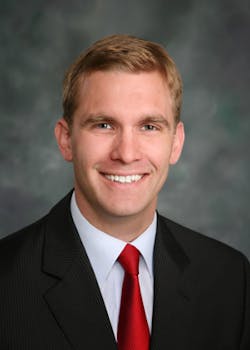The aviation maintenance industry is big and it’s growing. As you read this, there are nearly half of a million people working on the civil side worldwide – 244,000 in the United States – pumping almost $58 billion into the global economy. If you choose to read this again in 10 years, the total market will be 50 percent bigger – almost $90 billion and tens of thousands more jobs.
But those are just numbers on a spreadsheet … mathematical projections based on forecasts and models. Aviation maintenance will grow only with the right people: the AMTs, AMEs, and others who work to keep the world in flight. The real equation for growth is calculated through building and maintaining a skilled work force.
Finding qualified workers is an international challenge. Despite the recent contention by the United States’ Government Accountability Office (GAO) that there is little evidence of a shortage (again … numbers on a spreadsheet), talk to any hiring manager for a clear story to the contrary. Based on the Aeronautical Repair Station Association (ARSA) survey, the vast majority of members plan to add employees over the coming year, but almost all have difficulty filling technical positions.
There are people who want to work, the challenge is turning them from just “people” into a “qualified, technically trained and government certificated work force.” This takes time, effort, and resources from both businesses and job seekers. To get solutions one must know the right variables, resources, and strategies, and work through available allies.
The federal government has programs run through state grants and “one-stop” employment centers that help career technical education (CTE) programs supply businesses with skilled workers. Companies should investigate the Workforce Innovation and Opportunity Act (WIOA), an update of the Workforce Investment Act (WIA) (Department of Labor), explore the Perkins Collaborative Resource Network (Departments of Education, Health and Human Services, and Labor), and work with local and state governments to utilize every resource.
In the educational world, there are groups hard at work growing the aviation maintenance work force and venues to put it on display. The Aviation Technician Education Council (ATEC) is a partnership of more than 150 FAA-certificated training schools across the country. The council’s mission is to help its members get skilled workers out of the classroom and onto the maintenance line. The Aerospace Maintenance Competition pits teams of technicians, engineers, and students in a test of their combined abilities; “a stage to highlight the knowledge, skill, and integrity that is the foundation of today’s and tomorrow’s AMTs and AMEs.”
This knowledge and skill quickly transitions into work. According to ATEC President Ryan Goertzen, Part 147-certificated training programs enjoy a 90 percent-plus job placement rate. However, repair stations cannot simply sit back and wait for those applicants to pour in after graduation. Frankly, the training is too good and the lure of other, less-intensely regulated industries is strong.
Once in the workplace, technicians and employers need long-term development; requiring pursuit and support of continual training, advanced certifications (e.g., stepping from an avionics specialty to a licensed mechanic), and career growth. Constant development creates an internal supply of talent to replace retiring generations.
Businesses must take an active role in building the aviation maintenance work force. Potential and current employees need to continually invest in skills and capabilities. In addition to powering the growth projected by the models and forecasts, the product is a fulfilling career, a healthy industry, and safety in the air — no matter the form of the aircraft!
Brett Levanto is director of operations for the Aeronautical Repair Station Association (ARSA). He graduated from the George Washington University in 2004 and earned a Master of Public Policy from the College of William and Mary in 2009.




